Substance abuse, suicide attributed to payments, gov't documents suggest
By Jack Branswell and Ken Meaney,
Canwest News Service
January 26, 2009
Payments to Indian residential school survivors meant to compensate them for mistreatment have led to suicides, substance abuse and depression across the country, documents obtained by Canwest News Service show.
In B.C. alone, according to a member of one survivor's group, two dozen deaths have been attributed to the payments.
The Common Experience Payment (CEP) for Natives who attended residential schools was launched with much fanfare in the fall of 2007, after years of lawsuits and negotiations.
But notes from a January 2008 meeting of a group set up by the Department of Indian and Northern Affairs to troubleshoot payment issues highlighted the darker consequences.
"Rebound expected once $ (money) runs out," says notes attributed to Eric Duchesneau of the First Nations of Quebec and Labrador Health and Social Services Commission. "Suicide a concern. One community has reported four suicides connected to CEP payments."
The meeting notes also went on to say there was "one case of abandonment of a baby (that) has been connected to CEP as well."
Another note obtained under the Access to Information Act, from Peter Harrison, a former deputy minister in Indian and Northern Affairs, acknowledged the deadly fallout.
"It is true that there have been tragic examples of CEP payments contributing to the deaths of recipients," he said.
"On the whole, however, thanks to the work of the CIWG (Community Impacts Working Group), recipients, their families and communities have had the opportunity to prepare themselves well to benefit from the Settlement Agreement," Harrison added.
Notes from another meeting of the working group last May connected the payments to suicides in Native communities in British Columbia. Another organization that was part of the working group, the Indian Residential Schools Survival Society (IRSSS), sent out surveys to B.C. communities. In a report on the returned surveys it noted: "An increase in alcohol use has been recorded especially in the North; an increase in depression and suicide rates in the interior region."
The report also said "nine communities had fewer problems after the Common Experience Payments were issued. The rest had either no change or an increase in problems."
In an interview, Brenda Reynolds, who is with the survival society, cited "widespread" reports of deaths in B.C.
"In B.C., as far as we know, there are 24 deaths that different communities attribute to the Common Experience Payment," Reynolds said.
"We had many people who were happy to receive their common experience payment. Then we have stories of others who weren't prepared for such a large sum of money and ended up using drugs or alcohol. . . . We even have reports of people who died as a result of that."
Reynolds says she knows of no official statistics, but the survival society's figures come from families attributing the deaths to the payments.
"What they say is that the person received the money, and many people felt that it triggered them and so they started to drink and just kept drinking or overdosing."
The payments were to acknowledge the wrongs of the residential school system, from taking Native children out of their communities, to the physical and sexual abuse at the schools.
The Indian Affairs website on the issue includes a stark message: "This website deals with subject matter that may cause some readers to trigger (suffer trauma caused by remembering or reliving past abuse). The government of Canada recognizes the need for safety measures to minimize the risk associated with triggering."
Reynolds says it was hard to anticipate how people were going to react to the payments.
"In many instances people felt it was a validation of their experience," she said. "In other instances, some people felt that it triggered them again. And we found that to happen over and over again. Many survivors who had put it behind them were not prepared for the kind of impact it had on them. Even people who had done a lot of their healing work . . . they had a response when they received the cheque."
Ingrid Sochting, the chief psychologist at Richmond General Hospital in B.C. and an expert witness in some of the first native settlement cases there, said survivors face enormous problems because of what happened to them in the schools. Suddenly receiving a pot of money, in some cases, made them worse.
"Post-traumatic stress disorder and severe depression doesn't just magically disappear just because one has received an apology and some compensation," she said.
Assembly of First Nations National Chief Phil Fontaine says that on balance the payment process has been handled well, but he acknowledges there are issues.
"I'd be completely unfair if I argued that there wasn't one single suicide or violent death that was not a direct result of this," he said. Fontaine said the AFN had reports of deaths and suicides linked to the payment from the Yukon and it contacted Health Canada and Indian Affairs. Overall, he said, the authorities who "keep records of such matters (said) there was no spike that could be attributed to the CEP. I am talking about suicides and violent deaths."
CIWG made efforts to provide counselling for survivors. But at an October 2007 meeting, when payments were just starting to roll out, notes from that meeting state that the group's "primary foci have been: Risks related to safety (criminal issue, elder abuse) and opportunities related to money management (wills and estates, banking, investments.) Although it also recognized "the need for specific health supports."
Sochting said financial advice and counselling for many of the survivors has been inadequate.
"We need to do that (more follow up) so other groups -- and they may not be aboriginal groups -- receiving settlements might learn from (this settlement) because the problems are often similar," she said.
Indian Affairs Minister Chuck Strahl declined an interview request on the issue.
FACT BOX
As part of the resident school settlement process, payments were divided into two categories: Common Experience Payments, for all survivors who attended the residential schools and the Independent Assessment Process, which provides money to people who experienced serious physical or sexual abuse.
As of the end of last year, 96,000 applications had been received. Some 91,737 had been processed with 71,759 approved for payments, which totalled $1.3 billion. On average the payment has been just over $20,000.
Under the IAP, just over $88 million has been paid out which is separate from the CEP payments.
© Copyright (c) The StarPhoenix
dinsdag, januari 27, 2009
Residential school compensation leads to tragedy for some
Abonneren op:
Reacties posten (Atom)
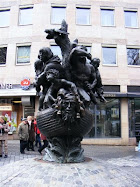
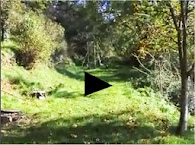
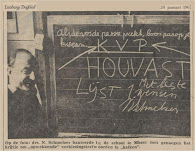


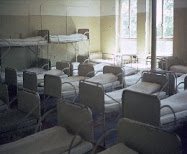










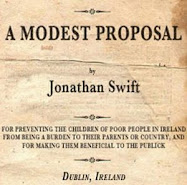


Geen opmerkingen:
Een reactie posten